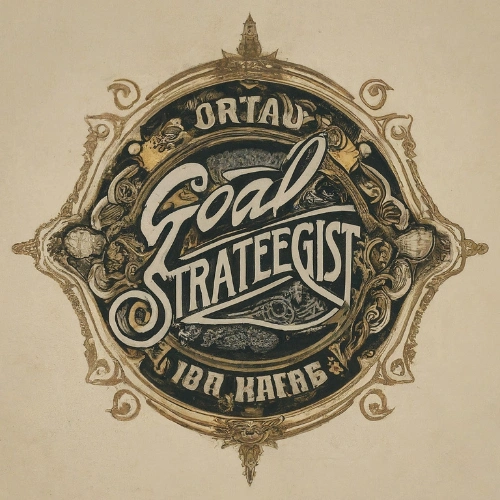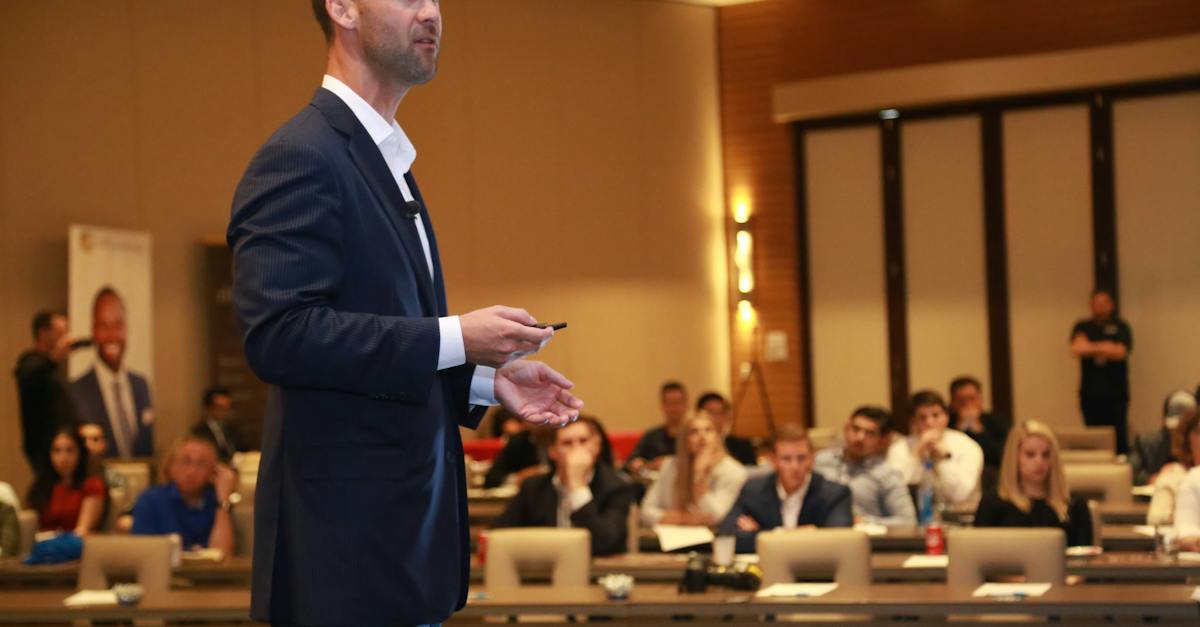When you’re navigating the complex world of legislative processes, understanding the goals of a conference committee is crucial. These committees play a pivotal role in reconciling differences between House and Senate versions of a bill.
Diving into the inner workings of a conference committee, you’ll find that their primary goal is to find a middle ground that satisfies both chambers of Congress. It’s all about compromise and collaboration to ensure that legislation can move forward effectively.
By the end of their work, a conference committee aims to produce a report that both the House and Senate can agree upon, leading to a final version of a bill that’s ready for enactment. Stay tuned as we explore the intricacies of this vital legislative step.
Importance of understanding conference committees
Grasping the significance of conference committees is pivotal for anyone interested in the legislative process. Conference committees serve as the nexus where the legislative puzzle pieces come together. Here lies the bridge between the initial bill concept and the final legislation that could potentially shape society.
When you understand their role, you’re better equipped to follow the legislation’s progress and predict possible outcomes. It’s like having a front-row seat to the negotiation process that ultimately dictates the final language of a bill. Moreover, your insight into these negotiations can help anticipate how the law will affect different sectors and individuals if passed.
Knowing the dynamics and objectives of conference committees can also be critical for lobbyists, policy advocates, and concerned citizens. When you’re aware of where the sticking points lie between the House and Senate versions of a bill, you’re in a stronger position to advocate for changes or influence the final outcome. It’s not just about being in the loop; it’s about being proactive in shaping policy.
Tracking conference committee activities can also provide valuable information for businesses, nonprofit organizations, and various agents who might be directly or indirectly impacted by the legislation. Their detailed reports provide key insights into the compromises made and furnish context for the legislature’s direction. When you’re armed with this information, you’ll be able to adjust your strategies accordingly, well ahead of your competition or opponents.
Understanding the goals and operations of conference committees doesn’t just help you stay informed; it empowers you to engage with and respond to legislative changes effectively. As these committees craft the compromise that both the House and Senate can support, the nuanced understanding of their processes is an asset that can’t be overstated.
The role of conference committees in legislative processes
In the legislative arena, conference committees serve a pivotal function; they smooth out the disparities between House and Senate versions of a bill. Picture this scenario: you’ve got two different blueprints for a house — one from the architect and another from the engineer. This is where the conference committee comes in, acting as a skilled team to merge these distinct blueprints into a coherent, workable design. They don’t just reconcile differences — they sculpt the final legislation that lands on the President’s desk.
Accurate tracking of conference committee activities lets you tap into the legislative pulse. Consider these vital processes they undertake:
- Conflict Resolution: When the House and Senate disagree, conference committees craft compromises, balancing diverse interests and smoothing over opposing stances.
- Policy Fine-Tuning: They refine legislative details, ensuring laws align with both chambers’ visions and public interest.
- Drafting Consensus: These committees are the political melting pots, forging broad agreements from a spectrum of viewpoints.
The decisions made within these commingles extend far beyond the walls of Congress. They impact regulations, fiscal allocations, and policy directions. For businesses, understanding these operations can be the difference between thriving and merely surviving. Lobbyists leverage conference committee insights to shape outcomes favorable to their clients, while policy advocates find in these committees a battleground for their advocacy efforts.
Stay ahead of the curve by familiarizing yourself with the procedural nuances of these committees. They often signal upcoming legislative shifts and provide a glimpse into the final bill outcomes. Whether you’re an engaged citizen, policy expert, or business leader, knowing how these collaborative bodies work is key to navigating the often-complex legislative environment. Keep an eye out for bipartisan agreements — as indicators of major legislative breakthroughs achieved by these essential entities of Congress.
Primary goal of conference committees
When diving into the legislative process, it’s crucial to grasp the primary goal of conference committees. In essence, these committees aim to reconcile differences between the House and Senate versions of a bill. Conflict resolution is at the core of their mandate, ensuring that a unified piece of legislation emerges that both chambers can agree upon.
Given your stake in the legislative outcomes, understanding this process helps you anticipate changes and prepare for the final version of the law. Each bill arrives at a conference committee with its unique set of alterations and amendments. The goal for conferees is not just to find common ground but to craft a bill that retains its intended purpose while satisfying the political and practical considerations of both chambers.
Unifying Diverse Perspectives
The conference committee serves as a microcosm of the broader legislative body, encapsulating the varied interests and viewpoints within Congress. Your awareness of this dynamic is vital as it underscores the committee’s function:
- Ensuring representation of both the House and Senate
- Blending disparate policy positions
- Reflecting negotiated compromises
These efforts culminate in the creation of a consensus bill, a clear indicator that the primary goal extends beyond mere compromise. It’s about sculpting a piece of legislation that is acceptable and functional, withstanding scrutiny from the diverse political spectrum.
By tracking the intricacies of these committees, you’re able to glean insights into the underlying strategies and power plays at work. Stay informed of the amendments being discussed and the areas of contention; these elements are pivotal to the success of the legislation. Your grasp of these negotiations is instrumental in predicting how new regulations, fiscal allocations, or policy directions will unfold.
Engagement with conference committee processes equips you with the foresight needed to navigate future legislative changes. Whether you’re a lobbyist, policy advocate, or just an informed citizen, your understanding of their objectives plays a significant role in your ability to adapt and influence. Keep a close eye on how these committees bridge the gap between competing visions to form cohesive, workable policies that steer legislative outcomes.
Remember, the outcome of conference committees doesn’t only mirror the immediate concerns of policymakers but also sets the stage for long-term policy implementation. By examining their objectives, you’ll be better positioned to predict the ramifications of legislative decisions on various sectors. This knowledge is indispensable in tailoring your strategies and advocacy efforts to the ever-evolving legislative landscape.
Finding a middle ground through compromise and collaboration
When you’re delving into the heart of legislative processes, understanding the ethos behind conference committees is pivotal. Conference committees essentially embody the spirit of compromise and collaboration, navigating through the tumultuous waters of political dissent to find a consensual middle ground.
These bipartisan committees operate on the premise that no single chamber holds the monopoly on wisdom or the public interest. The primary aim is convergence — it’s about sewing together the divergent pieces of legislation passed by the House and Senate into a coherent whole. They dissect the particulars of each bill, identifying overlapping intents and distilling the essence to form a unified legislative fabric.
Members from both chambers bring to the table their unique perspectives, expertise, and, quite often, competing interests. It’s a complex dance, featuring steps of negotiation and, occasionally, hard-fought concessions, to achieve mutually acceptable solutions. This intricate interplay is not just about hashing out differences but about reinforcing bipartisan cooperation for the broader legislative goal.
In this context, conference committees serve as both mirror and mold for the legislative creature that will eventually emerge. Their operation is a testament to the larger democratic process:
- Balancing regional and national interests
- Reconciling ideological spectrums
- Meshing practical needs with political realities
The work of a conference committee can be seen as meticulous craftsmanship, chiseling away the rough edges of each proposed bill to reveal a refined, operative statute. It’s a critical stage in the legislative journey where you can observe the transformative power of democratic dialogue in real time. The relentless pursuit of agreement amidst discord underscores the essence of political stewardship, pushing the boundaries of what can be collectively achieved within a pluralistic society.
As these committees labor behind closed doors, the output is not merely a document — it’s a testament to the resilience of legislative institutions, and the enduring capacity of divergent voices to converge for the common good. Following their path offers rich insights into the inner workings of governance and the art of the possible.
Producing a report that satisfies both chambers of Congress
As you delve deeper into the legislative process, it’s evident that a pivotal goal of conference committees is producing a comprehensive report that gains the approval of both the House and Senate. This report is the culmination of intense negotiations, reflecting a consensual version of the bill that embraces enough elements from both sides of Congress to be palatable for a majority.
In this critical part of the process, transparency and meticulous documentation are paramount; these attributes facilitate trust and validation of the compromise reached. The members of the conference committee comb through each line of the legislation, assessing the implications and outlining the rationale behind every amendment. The report they craft serves as the definitive blueprint for the final legislative text put forth for a vote.
Here’s what the report typically includes:
- A detailed account of the changes agreed upon
- A side-by-side comparison of the original House and Senate versions with the compromised text
- Explanations for each alteration pointing out the perceived benefits or necessity
- Statements from committee members, offering further clarity or expressing individual views
The necessity to address the priorities and reservations of the divergent legislative bodies means that negotiation skills are at a premium during this phase. It’s a strategic dance of give-and-take, where the art of persuasion is ever-present. The ultimate success of a conference committee is contingent upon its members’ ability to present a unified front – a report that stands the test of scrutiny from their respective bodies.
Members often face the tough job of selling the report back to their chambers. This requires not only adroit political navigation but also the ability to forecast and mitigate opposition. The report must resonate with a broad spectrum of legislators, pacifying concerns without diluting the essence of the proposed law.
Understanding this phase provides you a unique window into the power dynamics and alignments within Congress. The endgame for each member isn’t a mere compromise; it’s about threading a legislative needle that weaves together a durable and coherent policy capable of standing the rigors of political and public judgment.
Conclusion
Unlocking the mysteries of conference committees gives you an edge in navigating the legislative maze. You’re now aware that these committees don’t just reconcile bills but embody the spirit of compromise vital to effective governance. They’re the architects of consensus, blending the visions of the House and Senate into legislation that stands the test of political diversity. As you track their progress, you’re peering into the core of democratic processes, gaining foresight into policy impacts, and sharpening your advocacy strategies. Remember, the power of a conference committee lies in its collective ability to forge a unified resolution that resonates with the broader legislative body. Your understanding of this process is more than just academic—it’s a strategic asset in the complex world of policy and politics.


Leave a Reply